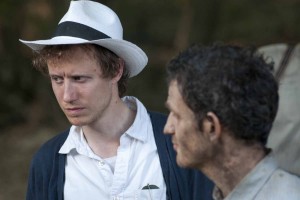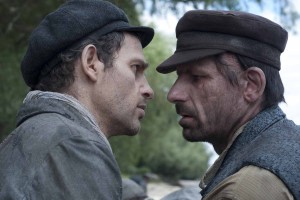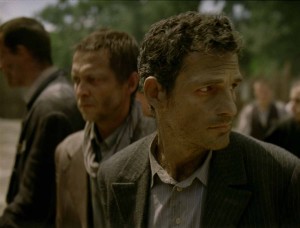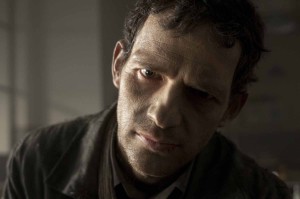
Son of Saul is Hungary’s entry for the best foreign film Oscar and earlier this year won the Grand Prix at the Cannes Film Festival. The fictional film takes place in 1944 in the heart of the notorious Auschwitz-Birkenau concentration camp where the Nazis murdered millions of Jews during World War II. The story is largely seen through the eyes of one individual, Saul Ausländer, who is one of the camp’s Sonderkommandos. These were prisoners chosen and forced by the SS to lead new arrivals by the thousands each day to the gas chambers and afterwards remove and burn the corpses. Most were killed after about four months of carrying out this harrowing duty.

Nemes, who directed his first full-length feature, said that during prep he created a dogma or set of rules for the shoot, which the cinematographer and production designer adhered to. “The film couldn’t look beautiful or appealing in any way but the intent was not to make a horror film,” said the director. “That meant the camera would strictly stay with Saul’s point of view in what he sees and hears, not going beyond his own field of vision.”
 Son of Saul was shot in a squarish 1.33:1 format. Nemes said he wrestled with the idea of going bigger. “We decided not to,” he declared. “Wide screen, would have made too much of the background. Our idea was to limit the scope, to make it a portrait of one man. Everything had to be seen in the face of this man, who would give the measure to it all.”
Son of Saul was shot in a squarish 1.33:1 format. Nemes said he wrestled with the idea of going bigger. “We decided not to,” he declared. “Wide screen, would have made too much of the background. Our idea was to limit the scope, to make it a portrait of one man. Everything had to be seen in the face of this man, who would give the measure to it all.”
The shoot was only 28 days long, taking place in and around Budapest, but prep lasted several years. The long period for preparation “turned out to be extremely useful by the time we got to the shoot,” said cinematographer Erdély. “We decided what to include but mainly what to avoid, so by the time we got to filming, there were no more questions.”
One of the key decisions was to “stay away from showing this world in a way that is acceptable or mundane,” he noted. “That was the fundamental idea. I would always keep the angle of the camera on the main character, keeping everything at eye level. If he’s pushed to the ground, we go to the ground.”
 Röhrig, who played Saul, had mainly been a writer and poet when he was cast to play the main character by the director. “We needed someone who was already like our main character – and Géza, who I knew from before, had it,” said Nemes. “I first considered some established actors from Europe, but I knew I needed someone realistic – who was very ordinary but had layers of some kind of sacred value or aura about him.”
Röhrig, who played Saul, had mainly been a writer and poet when he was cast to play the main character by the director. “We needed someone who was already like our main character – and Géza, who I knew from before, had it,” said Nemes. “I first considered some established actors from Europe, but I knew I needed someone realistic – who was very ordinary but had layers of some kind of sacred value or aura about him.”
“Laszlo is a very careful filmmaker and one of the things he was very careful about was not to bring 2014 into this movie at all,” commented Röhrig. “Even in my speech or in the way I moved we tried our best to be in October 1944. I had to lose weight, to get under 60 kilos. That was actually helpful. The real issue was the anxiety, the nightmare, the insomnia. Everything physical was very helpful.”
For the actor, the hardest thing was the extensive rehearsal period. “When you are rehearsing you open up yourself, and until then you are not fully sure on what part of yourself you’re going to show,” he said. “That makes you very vulnerable. By the time the actual shooting was about to start, things like the costumes, the makeup, the lines were some sort of an outlet to the tension and the stress.”





